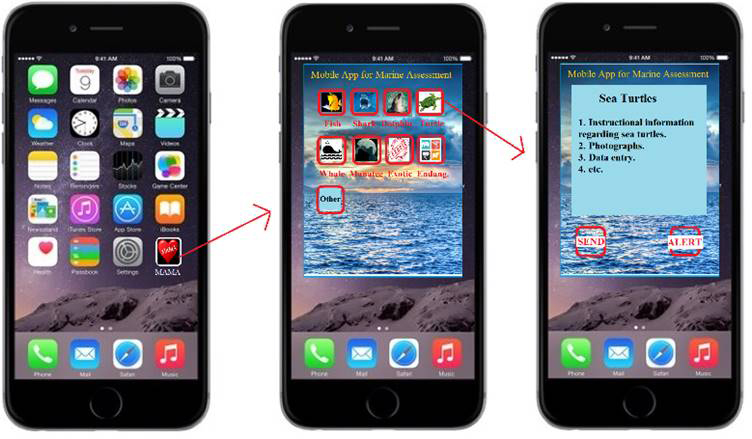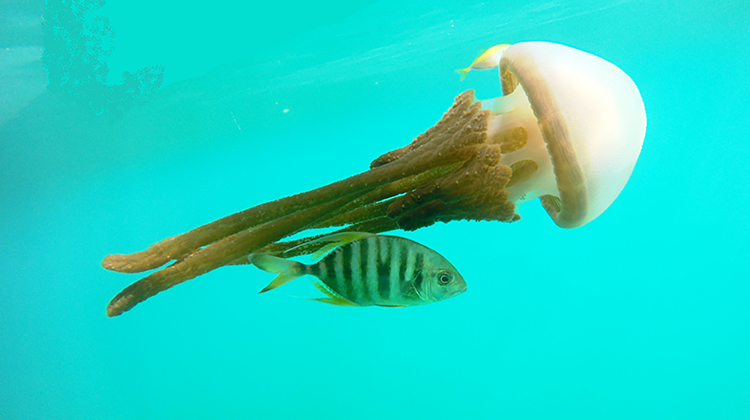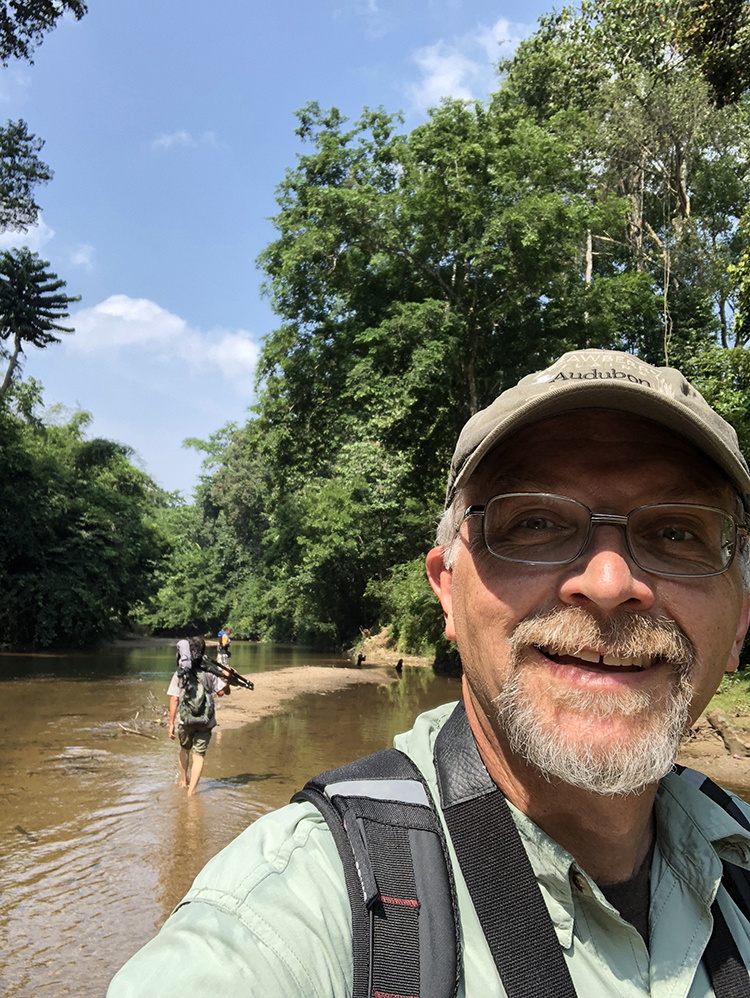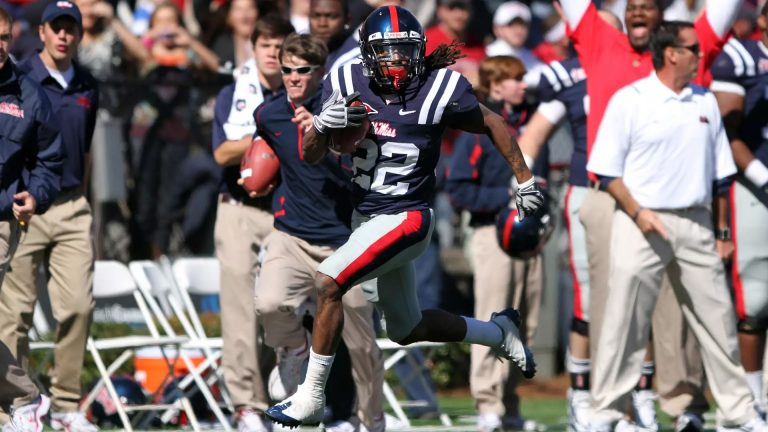
The Mobile App for Marine Assessment being developed by University of Mississippi biologists will allow citizen scientists to easily track the abundance and health of coastal species, as well as enter photos and enter photos and other data on the health of coastal ecosystems. Graphic courtesy Glenn Parsons/UM Department of Biology
Glenn Parsons and Richard Buchholz lead new Gulf of Mexico Citizen Scientist Initiative
In the age of crowdfunding and viral media, two University of Mississippi biologists are developing a mobile phone app that will allow “citizen scientists” to conduct marine assessments on the north central Gulf of Mexico.
Professors Glenn Parsons and Richard Buchholz have partnered to create a Mobile App for Marine Assessment as part of the Gulf of Mexico Citizen Scientist Initiative. MAMA’s state-of-the-art technology will allow residents and visitors to upload photos, measurements, GPS location and other data regarding specimens they have captured, observed and identified.

Users also will be able to submit photos of endangered or unusual specimens of fish and other marine creatures for identification, track the abundance and health of fish species seasonally and regionally, document invasive species in Gulf waters, and monitor changes in the health of coastal ecosystems and shoreline erosional changes.
The initiative has been awarded $1.7 million, including $1.2 million to University of Mississippi and $500,000 to the Mississippi Department of Marine Resources.
“In the aftermath of the Deepwater Horizon oil spill, I was surprised to learn how difficult it was to quantify the loss of the all the various types of marine and coastal life forms in the Gulf of Mexico,” Buchholz said. “Dr. Parsons and I are both interested in the conservation of biodiversity and felt strongly that the mammoth task of monitoring the populations of living things could only be accomplished with the help of citizen scientists.”
The educators believe the best way to get people to care about conserving biodiversity in the Gulf of Mexico is for them to be actively involved in monitoring and managing it. The Gulf of Mexico Citizen Scientist Initiative will help achieve that goal while also educating the public about biodiversity, population and ecosystem ecology, and the need for them to be involved in restoration efforts.
“Citizen science programs have the potential to educate the average person about how science advances,” Parsons said. “Additionally, at a time when research funding is scarce, citizen science initiatives are capable of providing valuable data to researchers that would otherwise be cost-prohibitive, if not impossible, to obtain.”
The program promises to make science more accessible to the general public, Buchholz said
“These initiatives have broadened opportunities for public participation in science and have served to ‘demystify’ the scientific process for the average citizen,” he explained. “Thanks to the internet and smartphones, data can be acquired, uploaded, evaluated and accessed with amazing rapidity.”
Before being funded, Buchholz and Parsons had already organized Ole Miss faculty across several schools and departments to create a Biodiversity and Conservation Research Group. Parsons is the group’s director and Buchholz is associate director.
Josh Gladden, vice chancellor of research and sponsored programs; Lee Cohen, dean of the College of Liberal Arts; and Gregg Roman, chair and professor of biology, all have been supportive of the efforts.
Roman said his colleagues’ achievements bode well for the department’s reputation for rigorous research.
“Funding of the MAMA program demonstrates that faculty in the biology department at the University of Mississippi are thinking outside the box to lead efforts in biodiversity and conservation research,” Roman said. “Dr. Parsons and Dr. Buchholz came up with the innovative solution of finding ways for all Mississippians to help collect this information and provide everyone with a clearer picture of the health of our marine ecosystems.
“MAMA empowers all of us to contribute to an understanding of what is happening, and all of us can be part of the solution.”

Scientists at coastal organizations, including the Gulf Coast Research Laboratory and the National Marine Fisheries Service, are providing advice during the developmental phase of the program.
“The first step is to design a prototype app that includes all the desired features,” Parsons said. “Through face-to-face meetings between our team and those interested parties, we will make decisions on all features to be included in the app.”
“Design is crucial in that it is important to establish how the app will appear, its graphics and so forth, and in how the user experiences the app,” Buchholz said. “Once developed, we will integrate analytics into the app to help track downloads, user engagement and retention of the app.”
Participants will be able to download MAMA to their mobile phones without charge.
The development team will provide a field kit, which includes a tape measure, thermometer, refractometer, scale, meter stick, tags and other items, to select users. Training sessions, conducted by Gulf of Mexico Citizen Scientist Initiative personnel and coordinated with sport fishing clubs, commercial fishing organizations, schools and various community organizations, will be provided for participants.
“The sessions will provide information on how the app works, how to take data, how to input data and pictures, the disposition of data, the procedures for using the field kit, how to apply tags and so forth,” Buchholz said.
All data uploaded will be reviewed and verified by initiative personnel before entry into the database. Information entered into MAMA with the alert function will be immediately reviewed.
“The alert function will simultaneously transmit to GMCSI personnel cellphones such that the appropriate response can be provided,” Parsons said. “Summary data will be provided via a dedicated website. Complete data sets will likewise be provided.”
Mississippi Department of Marine Resources officials praised the MAMA project as “a terrific way to supplement harvest data with multiple species.”
“Our DMR switchboard deals with these calls between 8 and 5 on weekdays only,” said Paul F. Mickle, MDMR chief scientific officer. “This could be expanded to receive posts and location data 24 hours a day.”
Disclaimer: This project was paid for (in part) with federal funding from the RESTORE Council and the Mississippi Department of Environmental Quality under the Resources and Ecosystems Sustainability, Tourist Opportunities, and Revived Economies of the Gulf Coast States Act of 2012 (RESTORE Act). The data, statements, findings, conclusions and recommendations are those of the author(s) and do not necessarily reflect any determinations, views or policies of the RESTORE Council or the Mississippi Department of Environmental Quality.
By Edwin B. Smith





